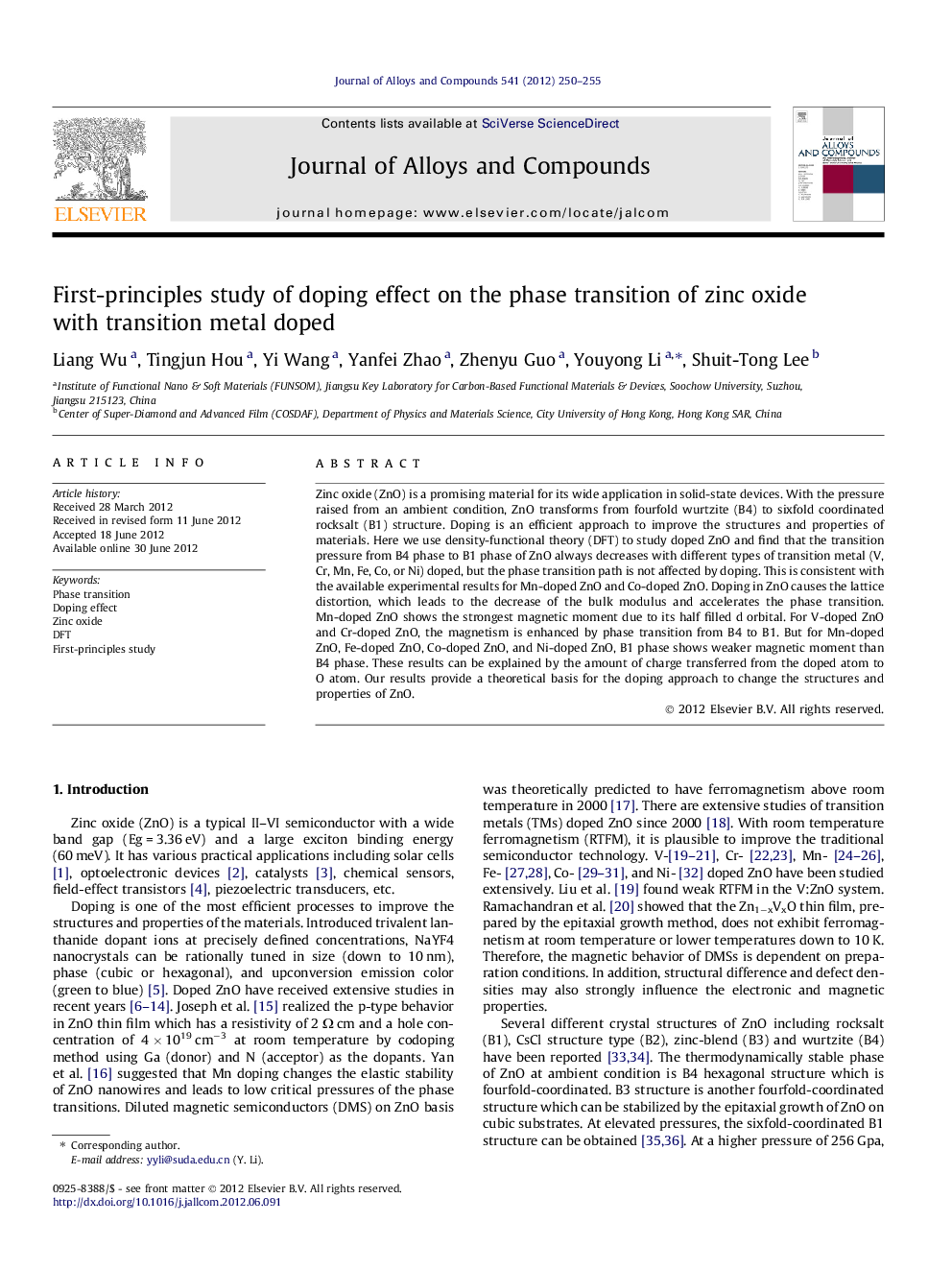| Article ID | Journal | Published Year | Pages | File Type |
|---|---|---|---|---|
| 1615451 | Journal of Alloys and Compounds | 2012 | 6 Pages |
Zinc oxide (ZnO) is a promising material for its wide application in solid-state devices. With the pressure raised from an ambient condition, ZnO transforms from fourfold wurtzite (B4) to sixfold coordinated rocksalt (B1) structure. Doping is an efficient approach to improve the structures and properties of materials. Here we use density-functional theory (DFT) to study doped ZnO and find that the transition pressure from B4 phase to B1 phase of ZnO always decreases with different types of transition metal (V, Cr, Mn, Fe, Co, or Ni) doped, but the phase transition path is not affected by doping. This is consistent with the available experimental results for Mn-doped ZnO and Co-doped ZnO. Doping in ZnO causes the lattice distortion, which leads to the decrease of the bulk modulus and accelerates the phase transition. Mn-doped ZnO shows the strongest magnetic moment due to its half filled d orbital. For V-doped ZnO and Cr-doped ZnO, the magnetism is enhanced by phase transition from B4 to B1. But for Mn-doped ZnO, Fe-doped ZnO, Co-doped ZnO, and Ni-doped ZnO, B1 phase shows weaker magnetic moment than B4 phase. These results can be explained by the amount of charge transferred from the doped atom to O atom. Our results provide a theoretical basis for the doping approach to change the structures and properties of ZnO.
Graphical abstractFigure optionsDownload full-size imageDownload as PowerPoint slideHighlights► We study the doping effect on B4, B1 structures and phase transition of ZnO. ► We calculate the phase transition barrier and phase transition path of doped ZnO. ► The transition metal doping decreases the bulk modulus and phase transition pressure. ► The magnetic properties are influenced by the phase transition process.
